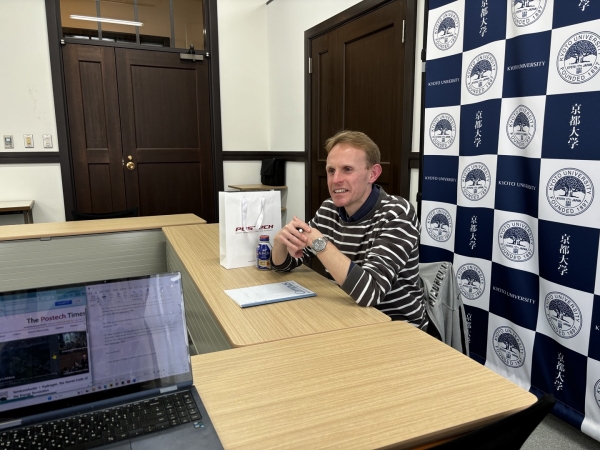The Postech Times interviewed Professor Daniel Packwood of Kyoto University on Jan. 20.

Could you briefly introduce yourself?
My name is Daniel Packwood and I am from New Zealand. I’m a theoretical chemist and I have a strong background in mathematics; applied mathematics and data science. In my research, we use data science and applied math to study chemistry. We make simulations and models to understand how to make new functional materials. We study how we can design simple molecules to make new kinds of drugs, semiconductors, solar cell devices, and gas sensors. In short, we are trying to develop theories for making new technologies based on molecules by using simulation mathematics.
Could you explain the practical applications of your research?
My research itself is just theory; we do not make new things but we help people doing the experiments by creating some direction for them. For example, in one of my projects, we studied a new kind of sensing material and tried to see whether or not it could be used for detecting lung cancer. A concentration profile of the compounds in the breath can be used to detect cancer or other diseases. Therefore, we did some calculations to see if detection could take place.
This is just a prediction; but now that we have made that prediction, the experimentalists can commit themselves to doing further experimental study, which costs a lot of money. We conduct an exploratory study on the potential and the possibilities of different materials in advance, so medical doctors and experimentalists can then test our predictions.
Your research area intersects multiple areas like mathematics, chemistry, and biology. How do you integrate these areas into your research and what discoveries have been made with this integration?
The key to the integration is that we talk with many people. I have many conversations with people working in the biology, physics, and mathematics fields. I need to roughly learn what their needs are and what kind of issues they are having trouble with. Once identifying the need, we start a research while building an understanding of different fields. Then, we take what we have studied and turn it into our own language. After this progress, we can start on the programming, apply mathematics, and start making predictions.
One example of such integrations we have achieved is in designing highly nano-scaled wires. In making conducting wires at the scale of single molecules, the questions people had were on how to design molecules that would assemble into shapes of the wire. I worked on predicting the kinds of molecules that are needed to make that assembly.
What are the biggest challenges you face while creating models for molecular structures?
The biggest challenge is that we have to make a lot of simplifications. In the real world, there are a great number of complications in the experiment. They have to consider impurities, and they cannot control variables perfectly — the temperature and the number of molecules they have in their system, for example. As a result, the systems that we study in the theory along with mathematics and simulation are not exactly the same as what is done experimentally. The predictions we make correspond to an ideal situation that is based on a simulation with a limited set of data, so it does not necessarily correspond exactly with the experiment. This is why correspondence is a significant concern. Finding a good compromise between studies that are simple enough to be studied with mathematics and simulation, and those that are useful in experimental studies is very tough and takes experience.


